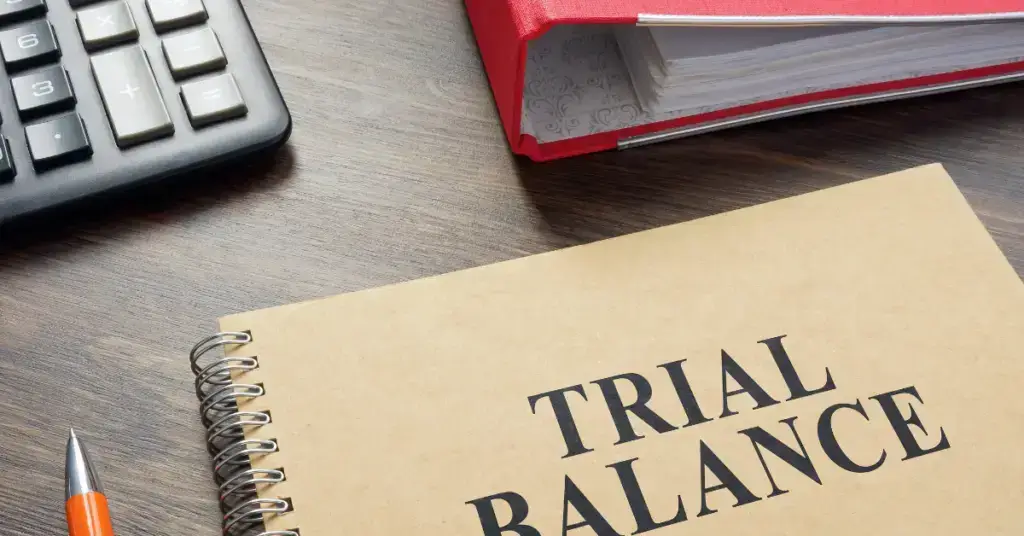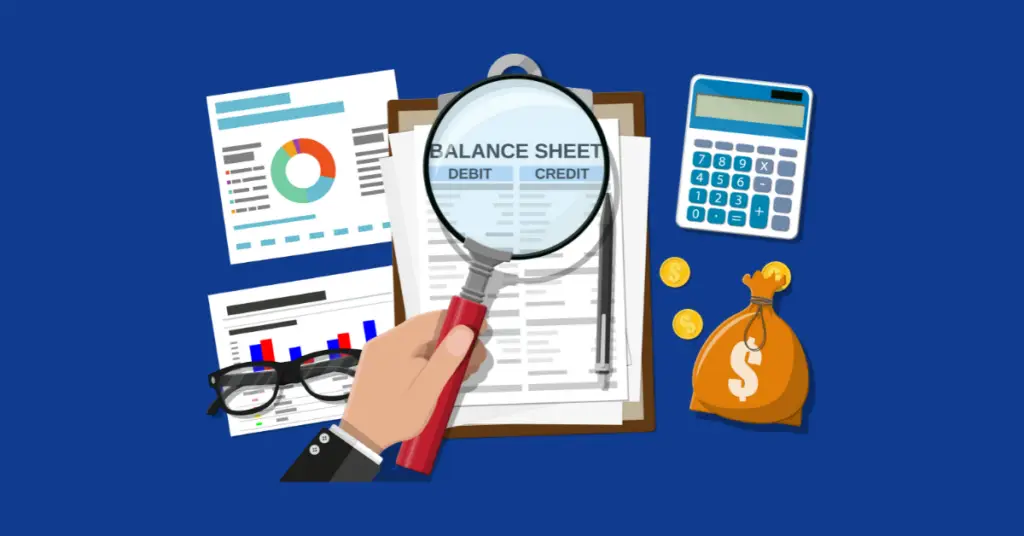In accounting, accuracy is paramount for ensuring financial statements reflect a company’s true financial status. An adjusted trial balance is a crucial component of this process. It helps ensure that all accounting records are correct before preparing final financial statements. In this blog, we’ll explore what an adjusted trial balance is, its purpose, how to create one and provide practical examples. By the end, you’ll have a comprehensive understanding of effectively adjusting trial balances. We’ll be discussing:
- What is an Adjusted Trial Balance?
- Adjusted Trial Balance Purpose
- Examples of Adjusted Trial Balance
What Is an Adjusted Trial Balance?

An adjusted trial balance lists all account balances after making adjustments. These adjustments account for accrued and deferred items, such as accrued revenues, expenses, and prepaid expenses. The primary goal of an adjusted trial balance is to ensure that all accounts are accurate and that the accounting records are ready for the preparation of financial statements.
In essence, the adjusted trial balance is a tool that confirms whether the ledger balances are accurate after accounting adjustments. Prepare the adjusted trial balance after the initial trial balance, which includes only the unadjusted balances of all accounts.
Adjusted Trial Balance Purpose
The adjusted trial balance serves several key purposes in the accounting cycle:
- Accuracy Confirmation: This verifies that all adjustments have been accurately recorded and that the ledger balances match the actual financial state of the company. This step is crucial before preparing financial statements.
- Financial Statement Preparation: It provides the final figures needed to prepare financial statements, such as the income statement and balance sheet. These statements are based on the adjusted figures to ensure they reflect the company’s true financial position.
- Error Detection: It helps identify any errors or discrepancies that may have occurred during the accounting period. By reviewing the adjusted trial balance, accountants ensure that all transactions are accurately recorded and adjusted.
- Compliance: Moreover, it ensures compliance with accounting standards and principles by thoroughly making sure all adjustments are accounted for. Consequently, this helps in maintaining the integrity and reliability of financial reporting.
How to Create an Adjusted Trial Balance
Creating an adjusted trial balance involves several steps, which we’ll outline below. Following these steps will help ensure that your financial records are accurate and complete.
1. Prepare the Unadjusted Trial Balance
Start by preparing an unadjusted trial balance. This initial trial balance includes all the ledger balances before any adjustments are made. List each account and its balance, and ensure that the total debits equal total credits.
2. Identify and Record Adjusting Entries
Next, identify necessary adjusting entries. These adjustments are made for items such as accrued revenues, accrued expenses, prepaid expenses, and unearned revenues. Adjusting entries are recorded in the general journal and then posted to the appropriate accounts in the ledger.
For example, if a company has earned interest income that hasn’t been recorded, you would make an adjusting entry to recognize this income.
3. Post Adjusting Entries to the Ledger
After recording adjusting entries, post them to the ledger accounts. This step updates the individual account balances to reflect the adjustments. Ensure that the ledger balances are accurate and match the adjustments made.
4. Prepare the Adjusted Trial Balance
With the updated ledger balances in hand, you can now prepare the adjusted trial balance. Begin by listing all accounts along with their adjusted balances in a trial balance format. Next, make sure that the total debits equal the total credits, thereby confirming that the adjusted trial balance is in balance.
5. Review and Verify
Finally, review and verify the adjusted trial balance for accuracy. Check each account balance to ensure you have made all adjustments correctly and that the totals are accurate. This step is crucial for ensuring that the financial statements prepared from this trial balance will be accurate.
Examples of Adjusted Trial Balance

To illustrate the process, let’s walk through an example. Suppose a company has the following unadjusted trial balance:
| Account | Debit ($) | Credit ($) |
|---|---|---|
| Cash | 5,000 | |
| Accounts Receivable | 3,000 | |
| Supplies | 1,200 | |
| Accounts Payable | 2,500 | |
| Revenue | 6,000 | |
| Rent Expense | 1,000 | |
| Utilities Expense | 500 | |
| Total | 10,700 | 8,500 |
Adjusting Entries:
- Accrued Revenue: Suppose the company has earned $500 in interest income that has not yet been recorded.
- Debit: Interest Receivable $500
- Credit: Interest Revenue $500
- Prepaid Expenses: Assume $200 of the prepaid rent has been used up.
- Debit: Rent Expense $200
- Credit: Prepaid Rent $200
After posting these adjustments, the updated balances would be:
| Account | Debit ($) | Credit ($) |
|---|---|---|
| Cash | 5,000 | |
| Accounts Receivable | 3,000 | |
| Supplies | 1,200 | |
| Interest Receivable | 500 | |
| Accounts Payable | 2,500 | |
| Revenue | 6,500 | |
| Rent Expense | 1,200 | |
| Utilities Expense | 500 | |
| Total | 11,400 | 9,000 |
Adjusted Trial Balance:
| Account | Debit ($) | Credit ($) |
|---|---|---|
| Cash | 5,000 | |
| Accounts Receivable | 3,000 | |
| Supplies | 1,200 | |
| Interest Receivable | 500 | |
| Accounts Payable | 2,500 | |
| Revenue | 6,500 | |
| Rent Expense | 1,200 | |
| Utilities Expense | 500 | |
| Total | 11,400 | 9,000 |
Conclusion
Creating an adjusted trial balance is a critical step in ensuring that a company’s financial statements are accurate and reliable. By adjusting the trial balance for accrued revenues, expenses, and other necessary items, you can ensure that your financial records reflect the true state of the business. This process helps in preparing accurate financial statements and detecting any discrepancies in the accounting records.
Understanding how to do this involves preparing an unadjusted trial balance, recording and posting adjusting entries, and ensuring that the final result is accurate. With these skills, you’ll be able to maintain accurate financial records and prepare reliable financial statements for your business.
Related Content






